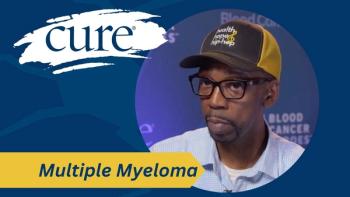
A New Agent is Being Explored in Brain Cancer
In the future, entrectinib may play an increasing role in the treatment of brain tumors, as well as other cancers.
Entrectinib (RXDX-101), a tropomyosin receptor kinase (TRK) inhibitor, is being investigated for the treatment of patients with relapsed or refractory solid tumors or primary tumors of the central nervous system.
The phase 1/1b dose-finding trial, STARTRK-NG (Studies of Tumor Alterations Responsive to Targeting Receptor Kinases — Next Generation), is currently investigating the use of entrectinib in pediatric patients, with two expansion cohorts planned for adult patients with neuroblastoma and other non-neuroblastoma, extracranial solid tumors that harbor a gene fusion in NTRK 1/2/3, ROS1 or ALK.
According to Garrett Brodeur, M.D., who is a researcher on the study, pre-clinical data for entrectinib was promising, and produced a greater response than was previously seen with lestaurtinib (CEP-701), which received orphan drug status approval by the FDA. However, lestaurtinib is no longer produced. Now, Brodeur said, researchers are in the process of looking for a new TRK inhibitor.
According to Pratik Multani, MD, Chief Medical Officer, Ignyta, as of March 2016, a total of 119 patients had been treated in other phase 1 entrectinib studies.
In findings from two phase 1 trials, ALKA-372-001 and STARTRK-1, entrectinib demonstrated a 79 percent objective response rate (ORR) in patients with gene fusions of the targets who had not received a previous kinase inhibitor for the genes, received effective therapeutic dose level, and had extracranial primary disease. Additionally, a response was seen in a 22-year-old patient with neuroblastoma with an activating point mutation of ALK, and significant tumor regression of central nervous system (CNS) metasteses was seen in an 18-month-old boy with infantile fibrosarcoma, harboring an ETV6-NTRK3 fusion.
The most common adverse events (more than 10 percent incidence) observed in the studies were fatigue/asthenia, dysgeusia, paresthesia, nausea, myalgia, diarrhea, dizziness, arthralgia, vomiting and constipation. There was no evidence of cumulative toxicity.
The phase 1/1B STARTRK-NG trial aims to find an optimum schedule and dosage for RXDX-101 to be used in the expansion cohorts, with the cohort groups planned to be tested for response to the therapy.
Ideally, Brodeur said, study researchers would like to see partial or complete responses to the drug. However, they would be happy to see less than partial responses if they get specific disease control for prolonged periods of time, Brodeur added.
“I don’t think anyone expects targeted agents like the EGFR inhibitors, ALK inhibitors, and TRK inhibitors by themselves to cure people,” Brodeur said, “But we think they would be useful in combination with other agents, because as a rule those targeted agents that block an important survival pathway render cells more susceptible to killing by conventional agents, so we can get much greater efficacy with little or no toxicity by using these agents.”
Brodeur said he anticipates responses to occur in patients determined to have evidence of an activated target. He also anticipates that entrectinib will play an increasing role in the treatment of both children and adults with cancer. Although it has taken a while for the pharmaceutical industry to recognize TRK as an appealing target, Brodeur said, there is a lot of evidence now for TRK activation in a variety of tumor types, including lung cancer, colon cancer, breast cancer, prostate cancer, as well as a number of pediatric tumors, including brain tumors.
“I expect to see the utility of this agent expanded and we will fairly quickly move on to combination trial,” he said.
“I’m excited that we’ve finally gotten a new TRK inhibitor into clinical trials, and I’m looking forward to both the expansion cohorts to look for a response to this as an individual agent, and ultimately combination therapies where I think it will add significantly to efficacy and will have little, if any, toxicity,” Brodeur said, adding that they have yet to see any toxicities in the phase 1 study.




